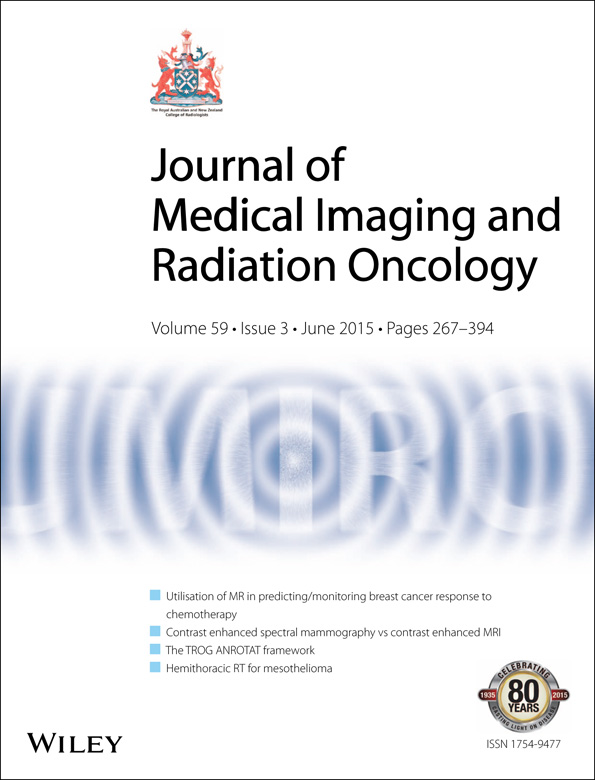Single-centre experience of stereotactic radiosurgery and fractionated stereotactic radiotherapy for prolactinomas with the linear accelerator
Abstract
Introduction
Primary management of prolactinomas is usually medical, with surgery a secondary option where necessary. This study is a review of a single centre's experience with focused radiotherapy where benefit was not gained by medical or surgical approaches.
Methods
Radiotherapy as an alternative and adjuvant treatment for prolactinomas has been performed at our institution with the linear accelerator since 1990. We present a retrospective review of 13 patients managed with stereotactic radiosurgery (SRS) and 5 managed with fractionated stereotactic radiotherapy (FSRT), as well as 5 managed with conventional radiotherapy, at the Prince of Wales Hospital. Patients with a histopathologically diagnosed prolactinoma were eligible. Those patients who had a confirmed pathological diagnosis of prolactinoma following surgical intervention, a prolactin level elevated above 500 μg/L, or a prolactin level persistently elevated above 200 μg/L with exclusion of other causes were represented in this review.
Results
At the end of documented follow-up (SRS median 6 years, FSRT median 2 years), no SRS patients showed an increase in tumour volume. After FSRT, 1 patient showed an increase in size, 2 showed a decrease in size and 2 patients showed no change. Prolactin levels trended towards improvement after SRS and FSRT, but no patients achieved the remission level of <20 μg/L. Seven of 13 patients in the SRS group achieved a level of <500 μg/L, whereas no patients reached this target after FSRT.
Conclusions
A reduction in prolactin level is frequent after SRS and FSRT for prolactinomas; however, true biochemical remission is uncommon. Tumour volume control in this series was excellent, but this may be related to the natural history of the disease. Morbidity and mortality after stereotactic radiation were very low in this series.




